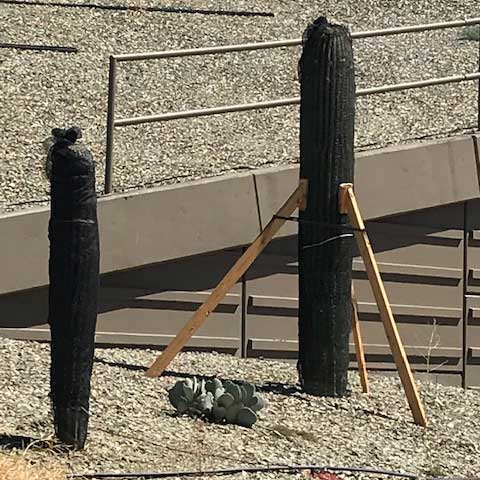Ask ADOT: Why do some saguaros along the South Mountain Freeway still have shade cloths?
Ask ADOT: Why do some saguaros along the South Mountain Freeway still have shade cloths?

Saguaros are blooming in much of the state, including some of the larger, newly transplanted saguaros along the Loop 202 South Mountain Freeway.
But some of the younger, smaller saguaros (called “spears” because they have no arms) along this 22-mile highway, which opened December 2019, are still covered in a black mesh to protect them from sunburn. The burning question some drivers have is why are these coverings still on some of them, and how long do they need to stay on?
Kirk Kiser, an ADOT landscape architect, said the shade cloths will stay on these spears for at least two growing seasons, until they are well established.
According to Kiser, when ADOT relocates saguaros, their solar orientations are marked, so when they are transplanted, the south side faces the sun, the same direction in which they were growing when they were harvested. “Solar orientation is key,” he said.
Not all of the spears you see along the South Mountain Freeway need this extra protection. Kiser said the ones that do were originally procured from a nursery grower that couldn’t guarantee which solar orientation the saguaros faced in the wild. “Providing a shade cloth helps to mitigate this condition, plus it mimics the shade normally provided from a host tree,” he said.
So to be safe, and give them the best shot at survival, ADOT landscapers are keeping them covered until at least the end of the year. The good news is that overall survival rates are best for these younger, armless saguaro spears.
ADOT salvaged more than 1,000 saguaros, palo verde trees and other native plants from the freeway’s path, where they spent time in a temporary nursery before being moved to their permanent homes along the new freeway.
